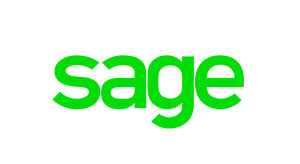In today’s challenging economic climate, credit control is more important than ever for UK businesses. Late payments are a growing issue, with small and medium enterprises (SMEs) in the UK collectively owed around £50 billion in unpaid invoices, according to UK Finance. Poor credit management can cause significant cash flow disruptions, increase reliance on borrowing, and even push businesses toward insolvency.
At Momentum Bookkeeping, we understand the importance of credit control in ensuring businesses get paid on time, maintain financial stability, and reduce the risk of bad debts. A well-structured credit control strategy can significantly improve cash flow and prevent unnecessary financial strain.
This guide outlines the importance of credit control, explores effective credit control techniques, and explains what are the 7 C’s of credit control?, all essential for maintaining a healthy cash flow.

Understanding Credit Control:
Credit control is the process of managing and monitoring the credit extended to customers to ensure timely payments. It goes beyond simply chasing overdue invoices, it involves setting clear credit policies, assessing customer reliability, and using effective collection methods.
Businesses that fail to implement a structured credit control process risk:
- Cash flow shortages, making it difficult to cover operational costs
- Accumulating bad debts, reducing overall profitability
- Higher borrowing costs, as businesses may need to rely on loans to bridge financial gaps
- Strained relationships with suppliers, due to delayed payments
With the UK government estimating that late payments contribute to 25% of business failures, it’s crucial to have strong credit control procedures in place.
The Importance of Credit Control:
The importance of credit control cannot be overstated. It ensures that businesses:
Maintain a steady cash flow: Cash is the lifeblood of any business. Late payments can disrupt daily operations and limit growth opportunities.
Reduce financial risk: Extending credit without proper checks can lead to bad debts. A structured credit control system helps prevent losses.
Enhance profitability: By securing timely payments, businesses can reinvest in growth, innovation, and expansion.
Improve customer relationships: A transparent credit control process sets clear expectations, preventing disputes over payment terms.
Comply with UK payment regulations: Under the Late Payment of Commercial Debts (Interest) Act 1998, businesses can charge interest and compensation on overdue invoices. Enforcing these rights can encourage prompt payments.
A strong credit control framework helps businesses stay financially secure and avoid unnecessary disruptions.
Setting Up a Strong Credit Control Policy:
A well-defined credit policy is the foundation of effective credit control techniques. It establishes the rules for extending credit and ensures customers understand their payment responsibilities.
Establishing Clear Credit Control Terms:
UK businesses should set clear, legally enforceable credit terms, including:
- Payment deadlines (e.g., 30, 60, or 90 days)
- Penalties for late payments (e.g., statutory interest of 8% plus the Bank of England base rate)
- Early payment discounts (e.g., a 2% discount for payments within 10 days)
These terms should be included in contracts, invoices, and customer agreements to prevent disputes.
Assessing Customer Creditworthiness:
Before offering credit, businesses must evaluate whether a customer can pay on time. This is where the 7 C’s of credit control come into play.
What Are the 7 C’s of Credit Control?
The 7 C’s of credit control help businesses assess a customer’s financial reliability:
- Character: Does the client have a history of making payments on time?
- Capacity: Can they afford to pay their invoices?
- Capital: Do they have sufficient financial reserves?
- Conditions: Are there economic factors that may impact their payments?
- Collateral: Do they have assets that could serve as security?
- Control: Does the business have strong internal credit policies?
- Cash Flow: Does their cash flow allow for timely payments?
Checking credit scores, trade references, and financial statements helps businesses determine if a client is a good credit risk.

Implementing an Efficient Invoicing System:
A streamlined invoicing process ensures businesses bill clients promptly and accurately, reducing payment delays.
Creating Accurate and Timely Invoices:
Invoices should include:
- A clear breakdown of charges
- Payment due date
- Accepted payment methods
- Late payment penalties
According to a survey by Sage, businesses that send invoices promptly are 30% more likely to be paid on time.
Using Automation for Streamlined Billing:
Automated invoicing tools like Xero, QuickBooks, and Sage can:
- Send invoices immediately after service delivery
- Issue automated payment reminders before and after the due date
- Track real-time payment statuses
Automation reduces administrative tasks and speeds up collections.
Monitoring Accounts Receivable
Consistently reviewing unpaid invoices helps businesses identify potential payment issues early.
Regularly Reviewing Outstanding Payments:
Using an aged debtors report, businesses can track overdue invoices in categories:
- 0-30 days
- 31-60 days
- 60+ days overdue
This allows businesses to prioritise overdue accounts and take action quickly.
Identifying Early Signs of Payment Issues:
Warning signs include:
- Repeated late payments
- Bounced payments
- Requests for extended credit
Businesses should contact clients proactively to resolve payment issues before they escalate.
Communicating with Clients About Payments:
Maintaining professional but firm communication improves the likelihood of getting paid.
Proactive Follow-Ups and Reminders:
- A structured follow-up schedule includes:
- Friendly reminders before the due date
- Firm but polite follow-ups after the due date
- Formal demand letters for continued non-payment
Negotiating Payment Terms When Necessary:
For customers facing financial difficulties, businesses may offer:
- Flexible payment plans
- Discounts for early settlements
This helps recover outstanding debts while maintaining positive client relationships.
Handling Late Payments and Bad Debts:
Despite best efforts, some clients may still fail to pay. A structured debt recovery process minimises financial losses.
Strategies for Chasing Overdue Payments:
- Polite email and phone reminders
- Formal demand letters
- Charging statutory interest on overdue amounts
Using debt collection agencies for persistent defaulters
When to Escalate Collection Efforts:
If a client remains unresponsive, businesses may need to consider legal action, such as:
- Issuing a County Court Judgment (CCJ)
- Filing a winding-up petition for company debts
Legal action should be a last resort due to its costs and potential impact on customer relationships.

Leveraging Technology for Credit Management:
Credit control software simplifies the process and improves efficiency.
The Benefits of Credit Control Software:
Tools like Satago, Chaser, and Sage offer:
- Automated invoicing and reminders
- Credit risk analysis
- Detailed financial reports
AI and Automation for Credit Control:
AI-powered analytics can predict late payments, allowing businesses to take action before an invoice becomes overdue.
Credit Control Examples:
Strong credit control is vital for maintaining a healthy cash flow, preventing bad debt, and ensuring business sustainability. In the UK, late payments are a growing concern, according to the Federation of Small Businesses (FSB), around 52% of small businesses experience late payments, affecting their ability to operate smoothly. Implementing effective credit control techniques helps businesses reduce risk while maintaining positive client relationships.
Below are some real-world credit control examples that demonstrate practical ways to manage customer credit efficiently.
Offering Early Payment Discounts:
One of the most effective ways to encourage prompt payments is by providing early settlement discounts. For example, a business may offer a 2% discount if an invoice is paid within 10 days rather than the standard 30-day term. This technique benefits both the customer, who pays less, and the company, which receives funds faster, improving liquidity.
Why It Works:
- Motivates customers to clear invoices quickly
- Enhances cash flow predictability
- Reduces administrative costs associated with chasing overdue payments
Setting Credit Limits for New Customers:
When extending credit, businesses must assess the financial reliability of new clients. A common approach is to set a conservative credit limit, such as £5,000 for new customers, gradually increasing it once they demonstrate consistent, timely payments.
Why It Works:
- Minimises risk of non-payment
- Allows businesses to build trust with clients over time
- Encourages responsible borrowing habits
To ensure a sound decision, businesses should apply the 7 C’s of credit control, which include character, capacity, capital, conditions, collateral, control, and cash flow. These factors help assess a customer’s ability to meet financial commitments.
Automating Payment Reminders:
Late payments often occur due to oversight rather than financial difficulty. Implementing an automated invoicing system that sends reminders before and after the due date can significantly reduce overdue invoices. Studies show that companies using automated credit control systems recover payments 30% faster than those relying on manual processes.
Why It Works:
- Reduces administrative burden
- Ensures consistent follow-ups
- Improves collection efficiency without damaging client relationships
Adjusting Payment Terms for High-Risk Clients:
If a client has a history of late payments or financial instability, businesses should adjust their payment terms accordingly. For example, a company may require:
- 50% upfront payment before starting a project
- Shorter payment terms (e.g., 14-day invoices instead of 30-day)
- Stricter contractual agreements to safeguard against non-payment
Why It Works:
- Reduces financial exposure
- Protects against unpaid debts
- Encourages clients to prioritise payments
Enforcing a Structured Debt Recovery Process:
When payments become overdue, businesses must have a structured recovery process in place. A standard UK credit control procedure may include:
- Sending a polite reminder a few days before the due date
- Following up with a firm but professional overdue notice
- Issuing a final demand letter (also known as a ‘Letter Before Action’)
- Engaging a debt collection agency for persistent non-payment
- Taking legal action as a last resort
Late payments cost UK businesses over £23 billion annually, according to recent studies. A proactive credit control strategy helps mitigate these losses and keeps operations running smoothly.
Why It Works:
- Establishes clear payment expectations
- Encourages timely resolution of outstanding debts
- Protects the business from financial instability

Wrapping Up…
Managing credit control effectively is essential for UK businesses to maintain cash flow, reduce financial risk, and protect profitability. At Momentum Bookkeeping, we specialise in credit control and bookkeeping, helping businesses streamline financial processes and ensure they get paid on time.
By implementing structured credit policies, leveraging automation, and maintaining proactive communication, businesses can improve financial stability and avoid cash flow crises.
If you need expert support in credit control and bookkeeping, contact Momentum Bookkeeping today to learn how we can help your business stay financially secure.

Momentum Bookkeeping Ltd
Mentieth House, 29 Park Circus, Glasgow, G3 6AP
Call. 0141 375 1240
Email. info@mvbooks.co.uk




